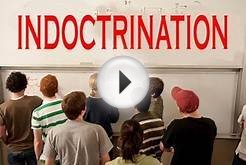Critics of America’s public schools always seem to start from the premise that the pre-kindergarten-through-12th-grade public education system in this country is failing or in crisis.
This crisis mentality is in stark contrast to years of survey research showing that Americans generally give high marks to their local schools. Phi Delta Kappa International and Gallup surveys have found that the populace holds their neighborhood schools in high regard; in fact, this year’s survey found that “Americans, and parents in particular, evaluate their community schools more positively than in any year since” the survey started.
How could there be such a disconnect between a national narrative about public education and opinions about local schools? The two contradictory narratives draw on completely different sources of evidence.
Debate about public education on the national level generally draws on evidence from macro-sources of data: scores from standardized testing, reports on the nation’s dropout rates, samplings from various student populations, and comparative assessments in various subject areas. But people get their school news from far more local, personal, and qualitative sources — from hometown newspapers, from local television and radio broadcasts, from neighbors, and from their own personal observations and experiences.
The national data sources obviously add value to the national discussion about reforming and improving public schools, but getting a full and comprehensive view of American public education also requires looking at the information flow and data from the local level.
This report looks at American pre-K-12 public schools — from the perspective of what Americans are reading and hearing in their local newspapers and media broadcasts. The intent is to see how this bottom-up view of the system might further inform our discussions about improving and renewing America’s public schools.
Sifting through these on-the-ground accounts from local news reports and other sources revealed that there is indeed a growing crisis in America’s public schools — one that is far more real and much more dangerous to our nation’s children than the prevailing narrative suggests. This particular crisis, evident to some degree in nearly every state in the country, hinges on two factors.
The first factor: New austerity budgets passed by state legislatures are starting to have a huge influence on direct services to children, youth, and families. There is widespread evidence that the education funding cuts are leading to:
- Massive cuts to early childhood education programs (pre-K and kindergarten);
- Huge class sizes in many subjects, reaching levels that are upsetting parents and potentially damaging students’ education;
- An end to art, music, physical education, and other subjects considered to be part of a well-rounded education;
- Cuts in specialized programs and/or hefty fees for them. Some of these programs serve students with developmental issues or those who need more individualized attention. They also include extra-curricular activities such as band and sports as well as academic offerings in science, foreign language, technology, and Advanced Placement subjects.
The second factor: As public schools are grappling with these severe budget cuts to programs, they also are facing enormous pressure to transfer tax dollars to targets outside traditional public education. New policy mandates at the federal and state levels are forcing public school systems to redirect tax dollars meant for public schools to various privately held concerns such as charter schools, private and religious schools, and contractors and companies tasked with setting up new systems for testing and accountability.
This report confines its attention to the emerging crisis in K-12 education only; although, the report authors acknowledge that similar trends and issues are affecting higher education as well. Furthermore, this report focuses on five states — Arizona, Florida, North Carolina, Ohio, and Pennsylvania — that perhaps epitomize the current crisis in K-12 education systems.
The analysis in this report compels the authors to conclude that the debate and discussion about public education policy must both acknowledge the new realities in American public schools and focus attention on the issue of adequately funding programs that serve all of America’s public school students. The report also recommends that states provide regulatory relief to local districts in order to stanch the transfer of public education funds to privately held entities.











